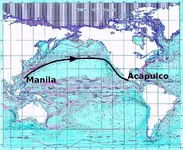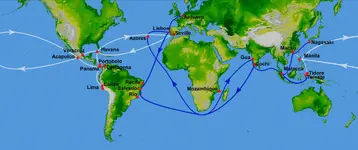umm, the Nehalum beeswax wreck has yet to recover anything but beeswax. I would not consider that, or the wrecks coming from that direction of little to marginal value as far as what we would consider treasure these days.
I believe they were bringing goods of value to the Americas to trade for silver and bring supplies to the Americas, not bring it with them. As the Asian markt valued silver, not gold, ships returning would have been loaded with silver.
This northern route TO the Americas would not have been loaded with anything of much value today.
The galleon trade was supplied by merchants largely from port areas of Fujian who traveled to Manila to sell the Spaniards spices, porcelain, ivory, lacquerware, processed silk cloth and other valuable commodities. Cargoes varied from one voyage to another but often included goods from all over Asia - From China, jade, wax, gunpowder and silk from China; amber and cotton from India; rugs from India; spices from the East Indies and a variety of goods from Japan, including fans, chests, screens and porcelain.
View attachment 1685998
The route going back with the treasure was not up the West Coast
View attachment 1685999





